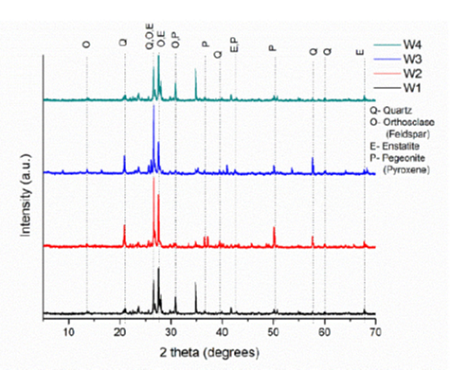


Indian Journal of Science and Technology
Year: 2022, Volume: 15, Issue: 24, Pages: 1213-1223
Original Article
G K M Rajapaksha1, J K Clegg2, K S A Arachchige3, A V R S Coswaththa4, G D N H Gunarathna5, K M E P Fernando6, H M R Premasiri7, N M S Sirimuthu5, C N K Patabendige1*, N.M.S Sirimuthu8
1Department of Science for Technology, University of Sri Jayewardenepura, Sri Lanka
2School of Chemistry and Molecular Biosciences, The University of Queensland, St Lucia, Queensland, Australia, 4072, 4072
3The centre for Microscopy and Microanalysis, The University of Queensland, St Lucia, Queensland, Australia, 4072, 4072
4Department of Geology, University of Peradeniya, Sri Lanka
5Department of Chemistry, University of Sri Jayewardenepura, Sri Lanka
6Department of Botany, University of Sri Jayewardenepura, Sri Lanka
7Department of Earth Resource Engineering, University Moratuwa, Sri Lanka
8Center for Nanocomposite Research, University of Sri Jayewardenepura, Sri Lanka
*Corresponding Author
Email: [email protected]
Received Date:14 February 2022, Accepted Date:20 May 2022, Published Date:01 July 2022
Objectives: This study aimed to conduct a detailed chemical analysis of the Samanalawewa dam to provide information on its weathering conditions. Method: The mineralogical composition of the dam was analyzed by powder Xray diffraction (PXRD), atomic absorption spectroscopy (AAS), gravimetric, and X-ray fluorescence (XRF) analysis in order to identify chemical changes that have taken place. Findings: Widespread discoloured (brick red) and crushable areas in the dam and the quarry site indicate weathering of the compositional rocks. Each weathered rock sample showed a similar compositional pattern to each other as well as charnockite (CHA) rather than the other structural rocks of the dam; biotite gneiss (BIO), garnet biotite sillimanite gneiss (GAR), and limestone (LIM) indicating that only CHA has been weathered rapidly. Since LIM is not affected and the contact water (pH; reservoir 6.79 - 7.12 and holes in the quarry site 6.43-6.78) is almost neutral, this rapid weathering has not been governed by general chemical weathering processes like acid rains or stormwater. The relative contents of aluminium and magnesium have decreased during the weathering process while increasing the relative content of iron as well as sodium, which is a mobile element. The potassium content also has not decreased significantly. Moreover, chemical weathering indices like chemical index of alteration (CIA) and chemical index of weathering (CIW) values for completely weathered rocks were less than 50 revealing their unsuitability to assess the degree of weathering of the Samanalawewa dam. Novelty: Charnockite in the Samanalawewa dam has been weathered rapidly and chemical weathering indices; CIA and CIW are not valid to assess its degree of weathering.
Keywords: Metamorphic; Charnockite; Rock weathering; Rock composition; Chemical weathering indices
© 2022 Rajapaksha et al. This is an open-access article distributed under the terms of the Creative Commons Attribution License, which permits unrestricted use, distribution, and reproduction in any medium, provided the original author and source are credited.
Published By Indian Society for Education and Environment (iSee)
Subscribe now for latest articles and news.